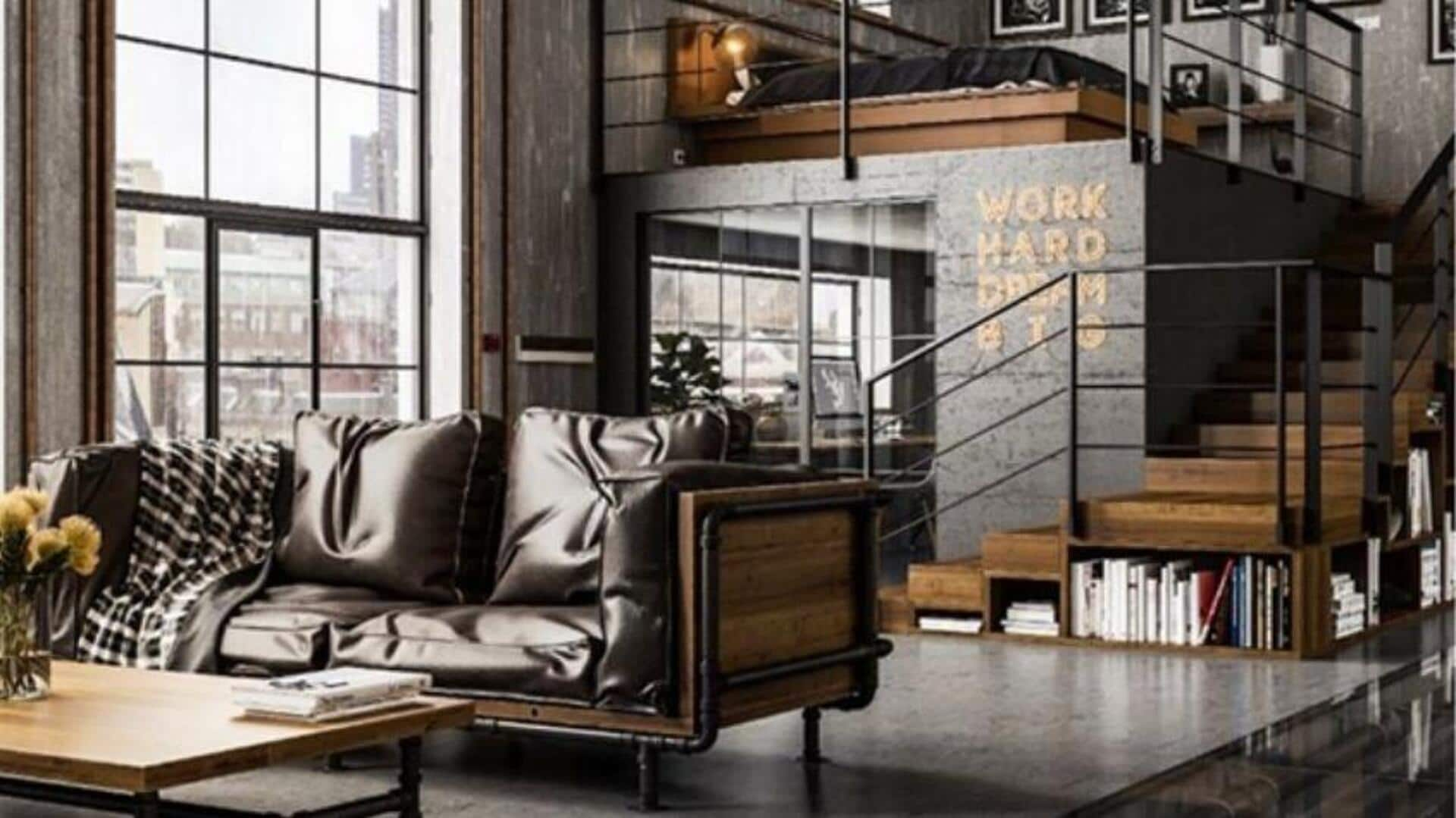
Industrial chic decor: 5 ideas you'll love
What's the story
Industrial chic is basically where unfinished raw elements meet modernity. How do you think some spaces are both functional and stylish? Yep, the industrial chic aesthetics are inspired by old factories and industrial spaces. They use metal, wood and concrete to create a look that is vintage yet contemporary at the same time. By keeping things simple and practical, industrial chic transforms any space into an urban haven.
Raw Elements
Embrace raw materials
Incorporating raw materials is the key to achieving an industrial chic look. Exposed brick walls, concrete floors, and visible ductwork are hallmark features of this style. These elements add texture and character to a space, all the while maintaining a minimalist feel. Using reclaimed wood for furniture or accents can also enhance the rustic charm of the design.
Color palette
Opt for neutral colors
A neutral color palette is a must for an industrial chic. Shades of gray, black, white, and brown rule this style. These colors lend a clean backdrop, letting the raw materials take center stage, without overwhelming the senses. You can add metallic accents in silver or bronze for a subtle contrast.
Practical design
Incorporate functional furniture
Furniture in an industrial chic space should be as functional as it is stylish. Look for pieces made from sturdy materials such as metal or wood, with simple lines and minimal ornamentation. Multi-purpose furniture, such as storage benches or tables with built-in shelving, can maximize utility without sacrificing aesthetics.
Vintage touches
Use vintage accessories
Adding vintage accessories can add warmth and personality to that industrial chic space. Think old factory lights, antique clocks, or repurposed machinery parts to add a touch of whimsy. These pieces not only act as great conversation starters, but also reinforce the historical roots of the design style.
Texture contrast
Balance with soft textures
To keep an industrial space from being too cold or stark, introduce soft textures through textiles like rugs, cushions, or curtains made of natural fibers such as cotton or linen. This juxtaposition of hard surfaces with soft fabrics adds depth while making sure that the space is comfortable.